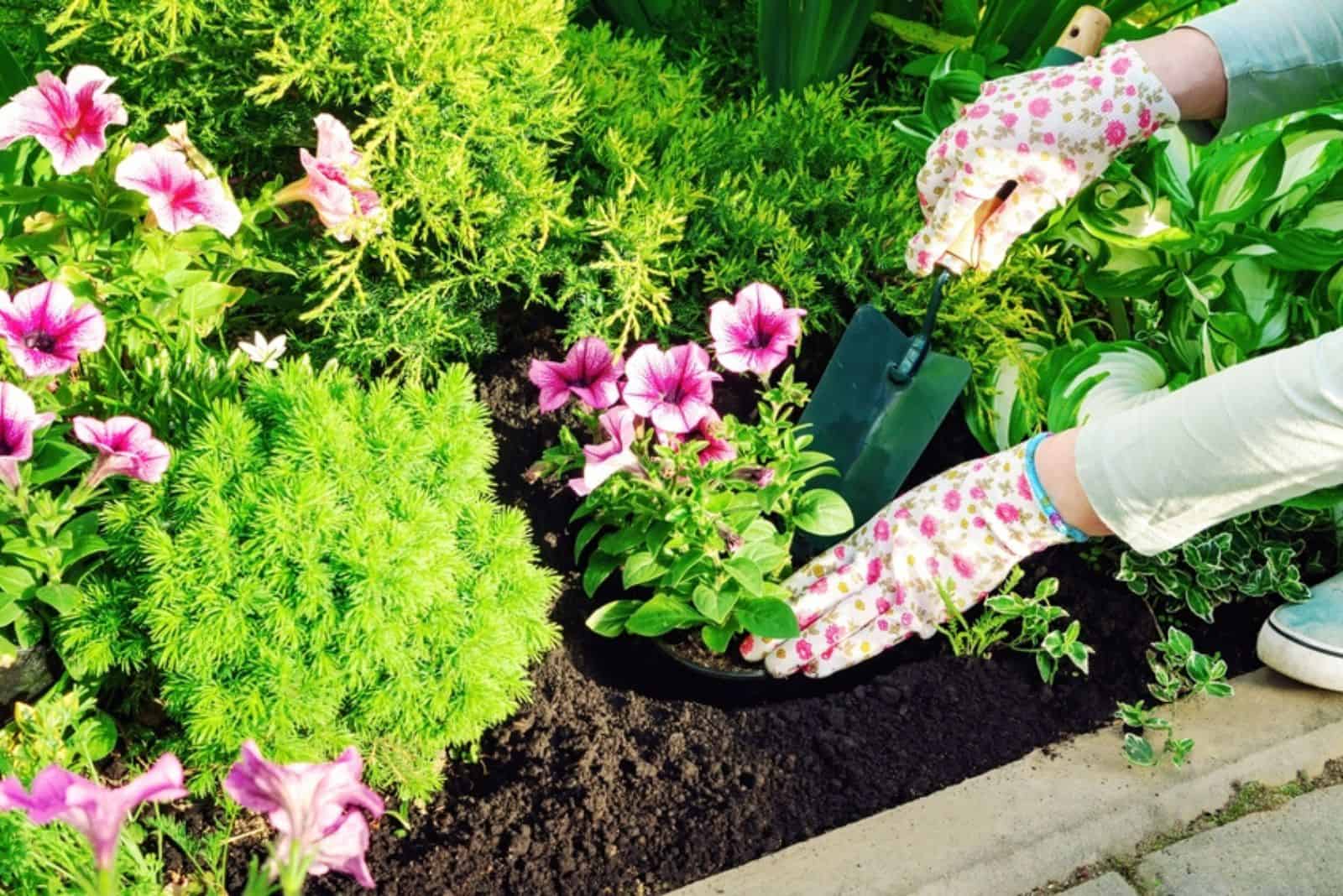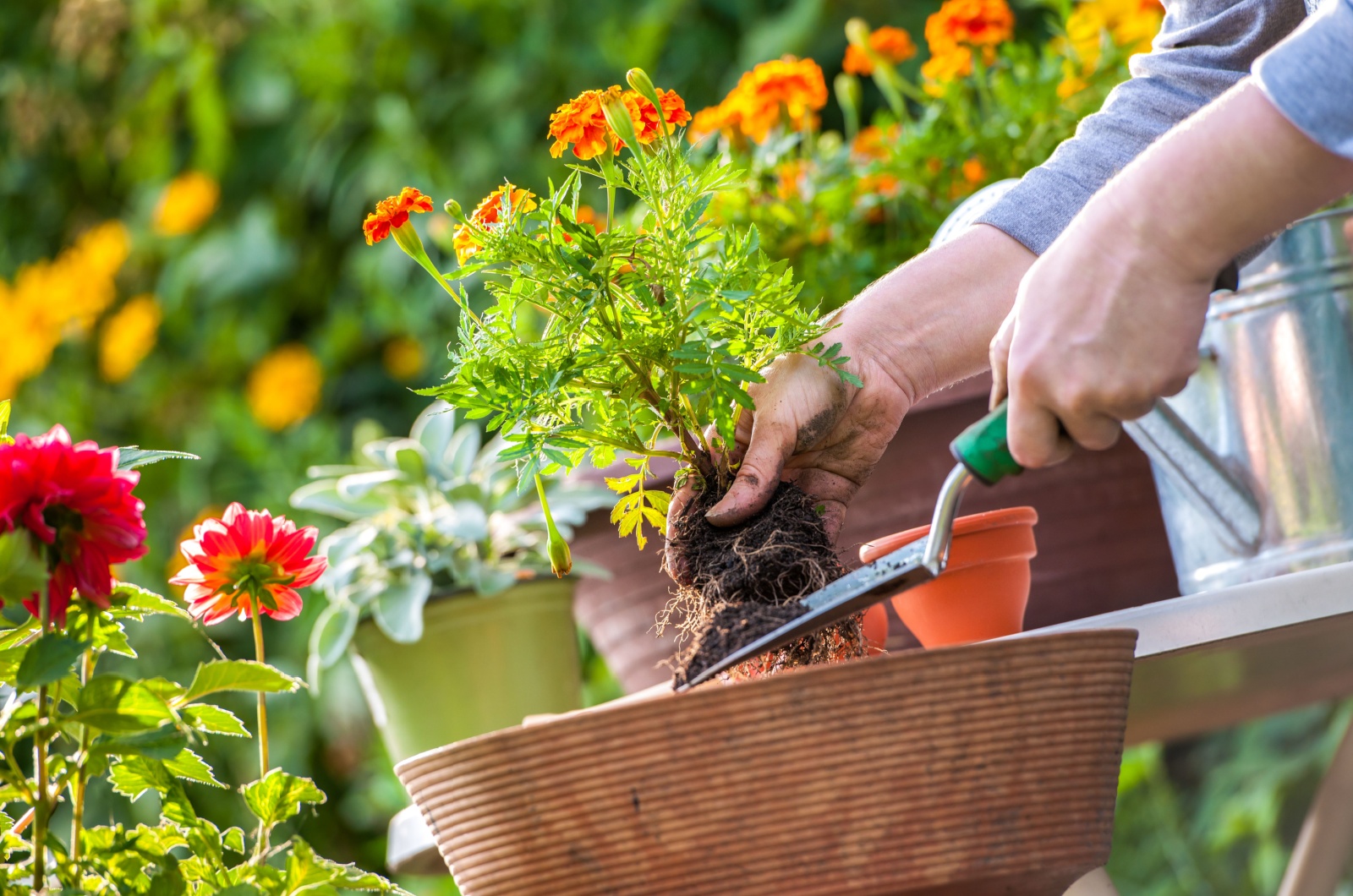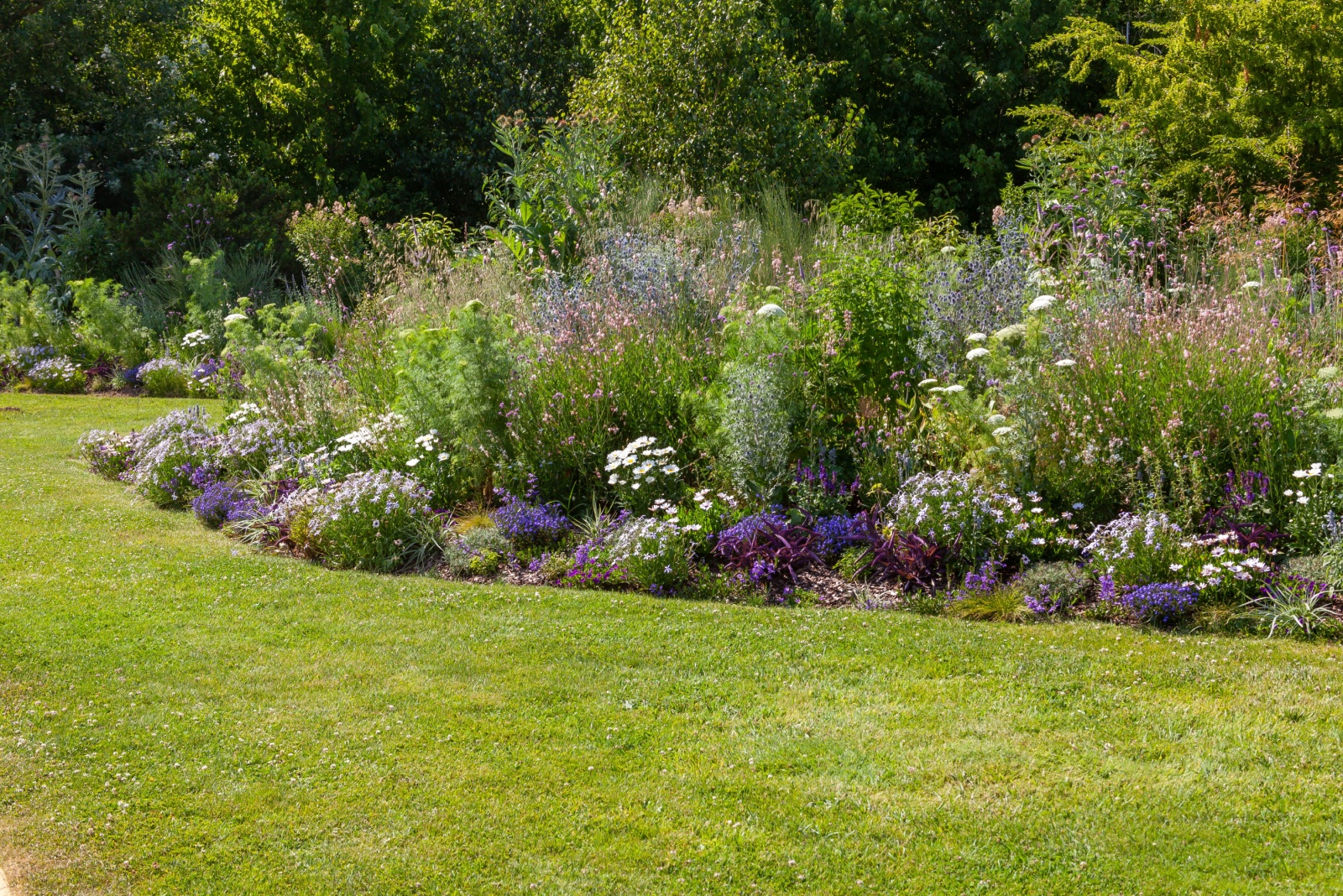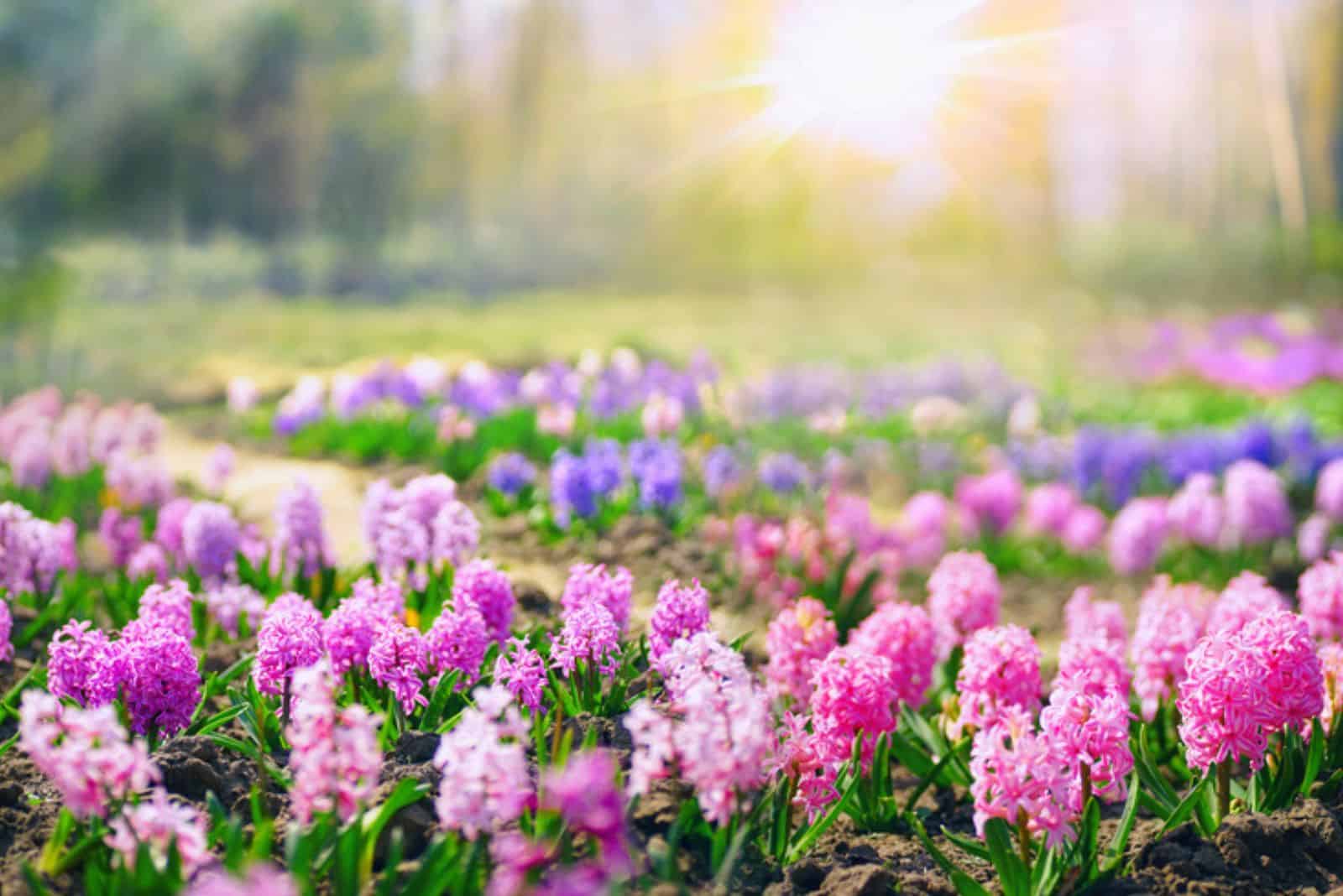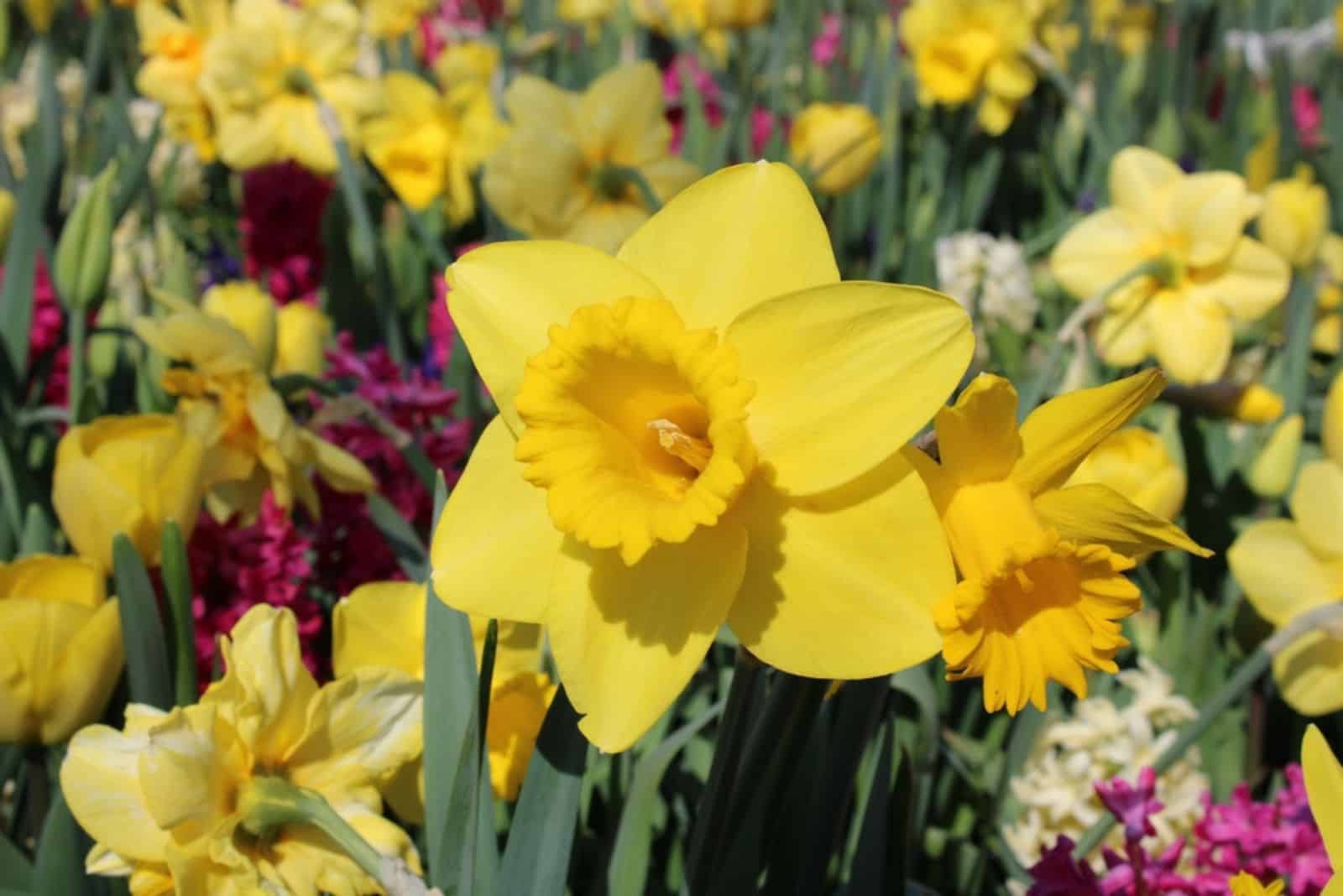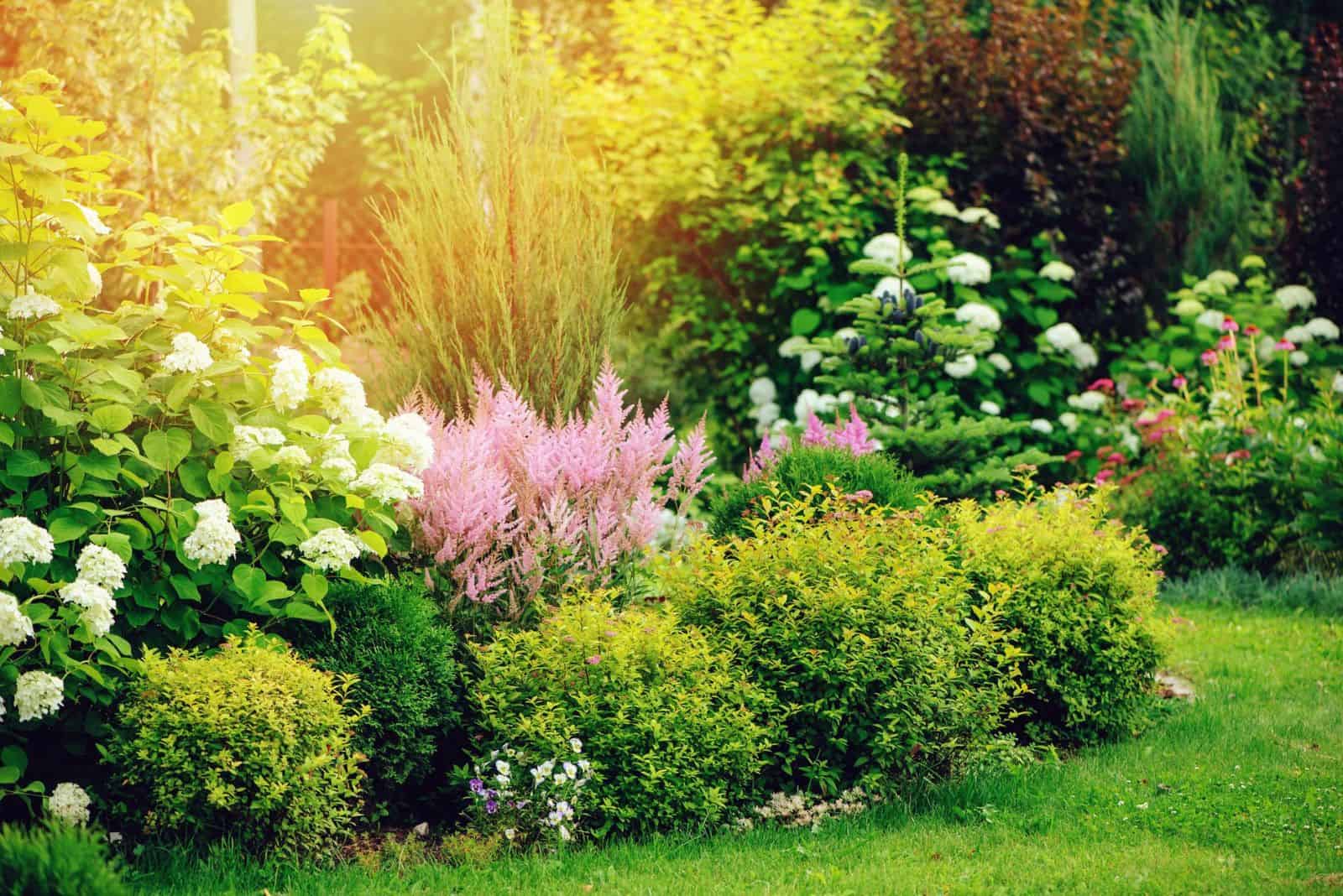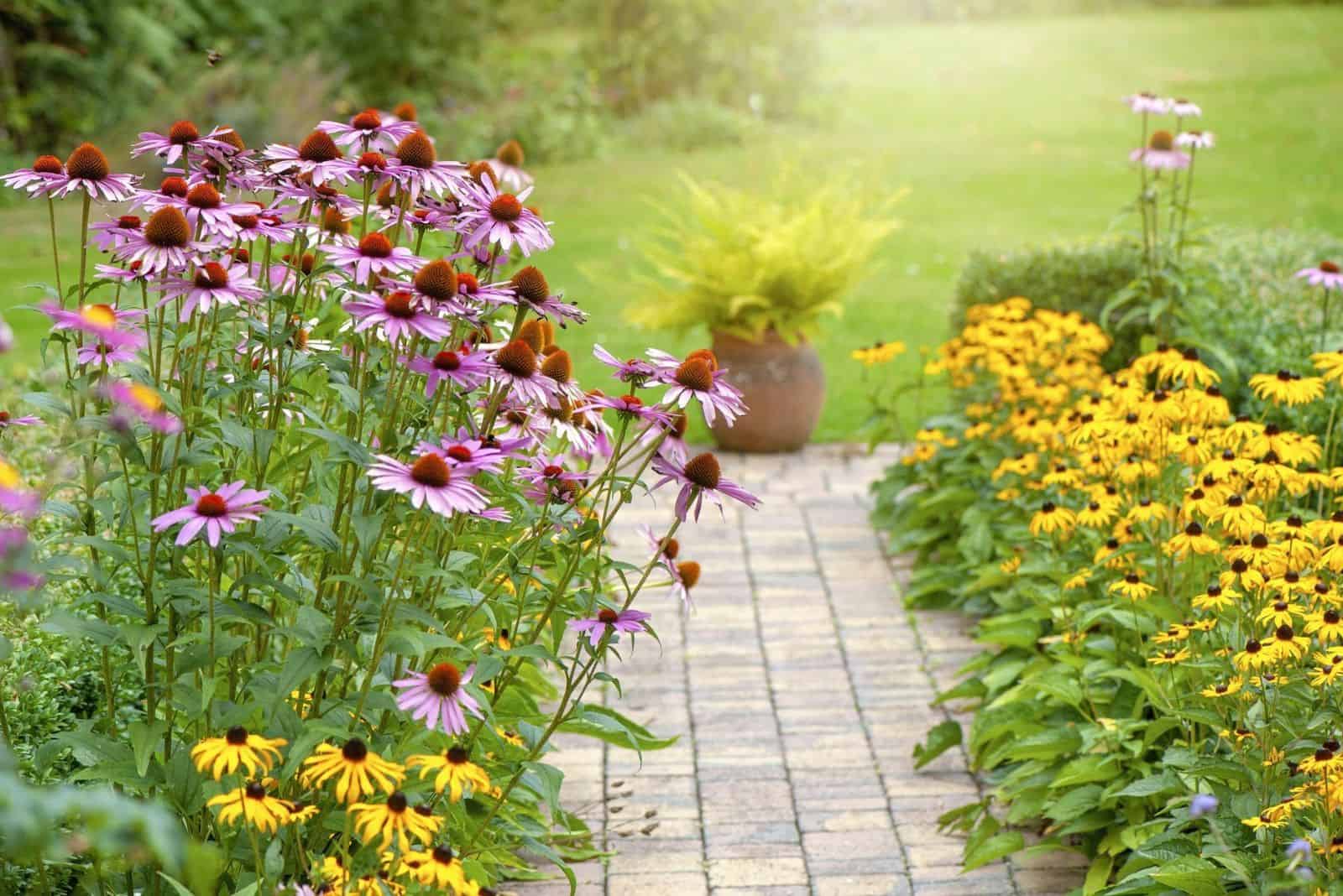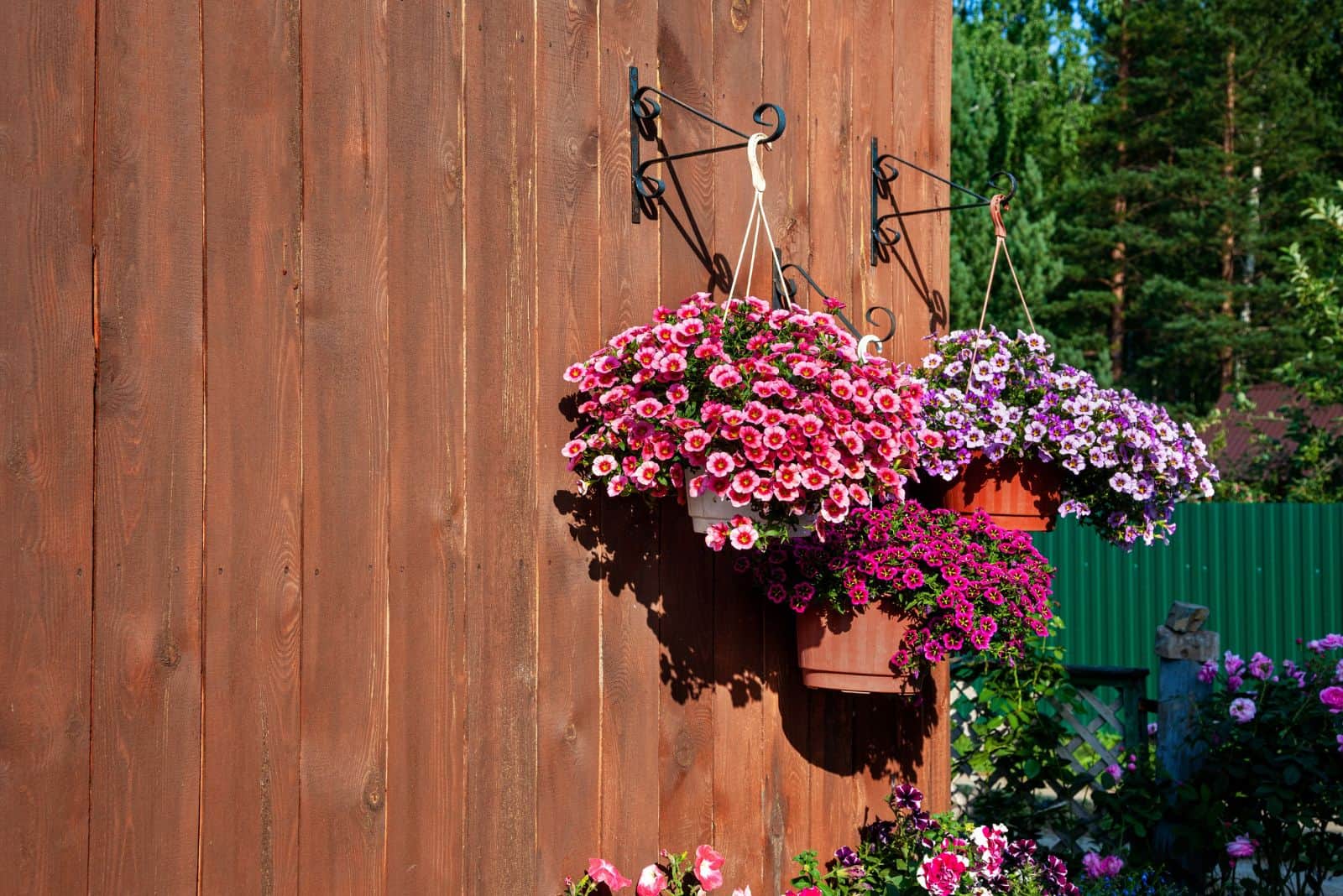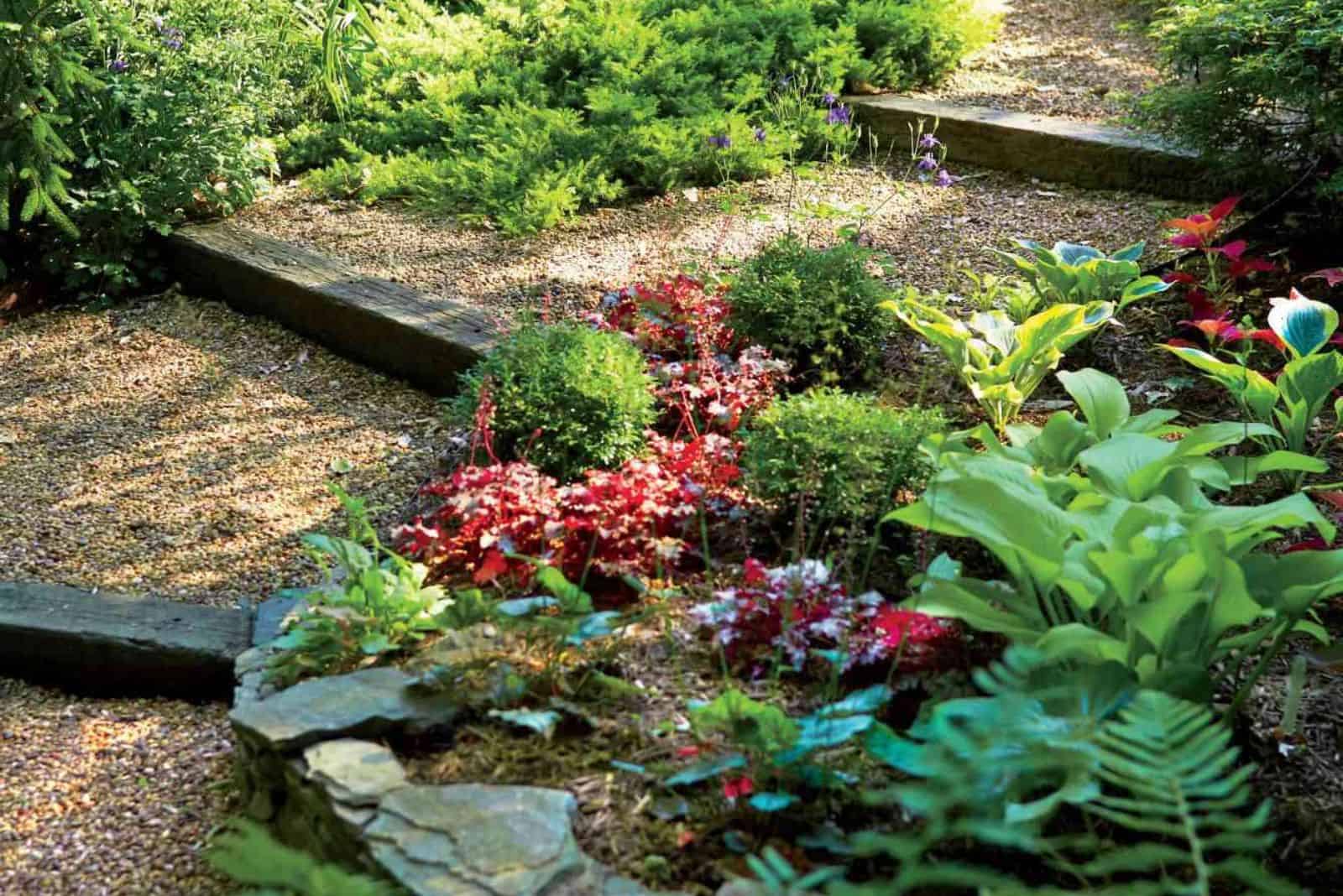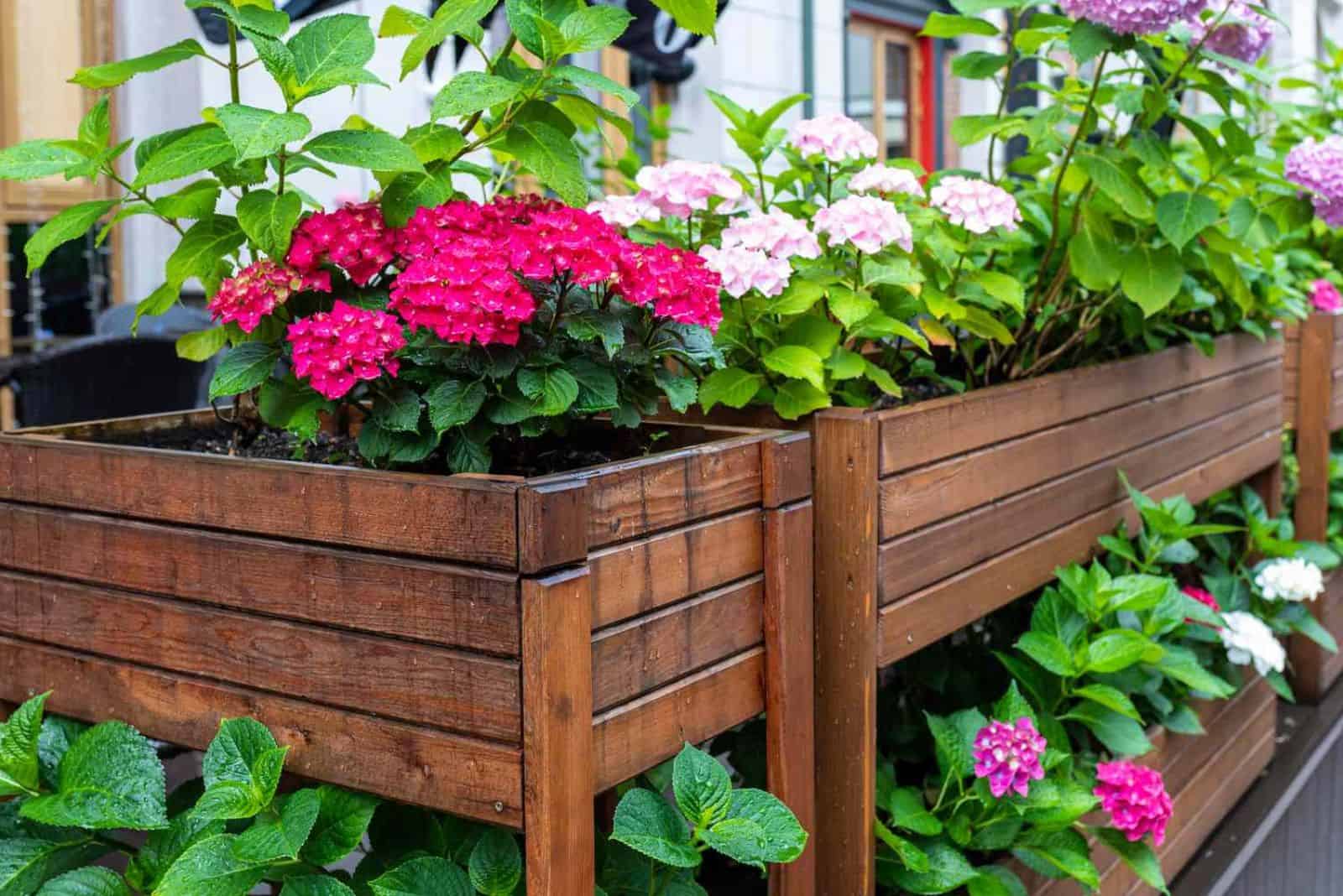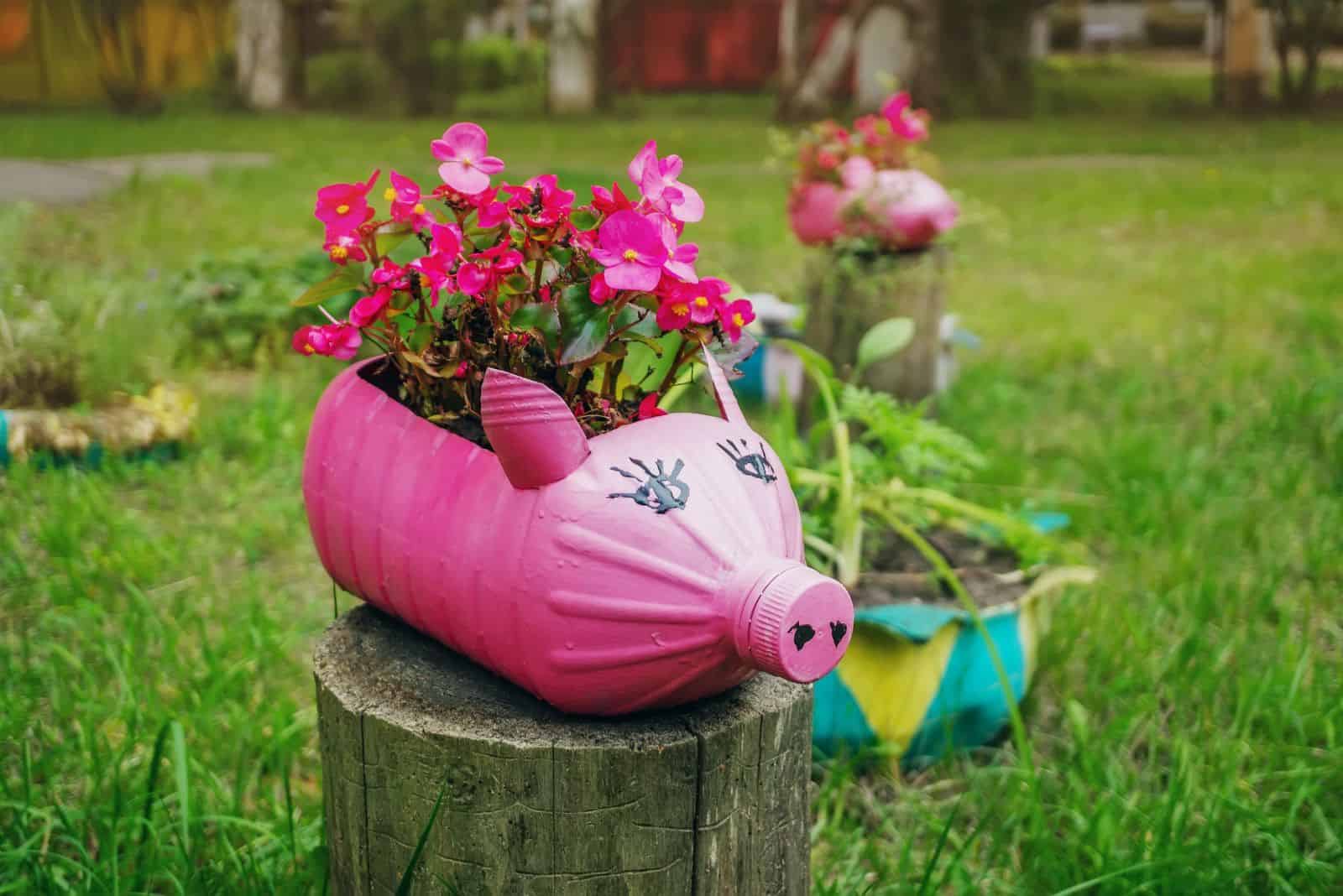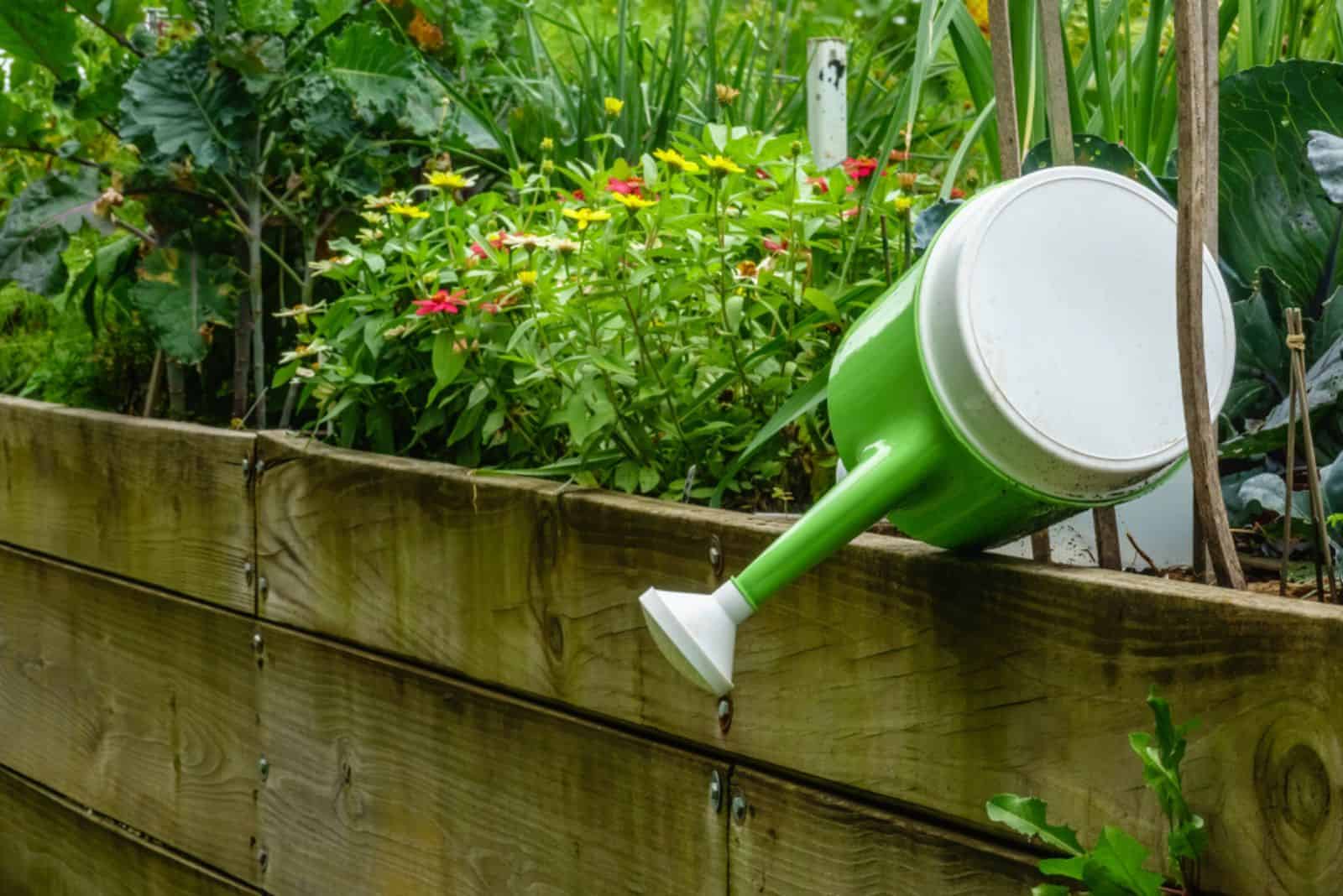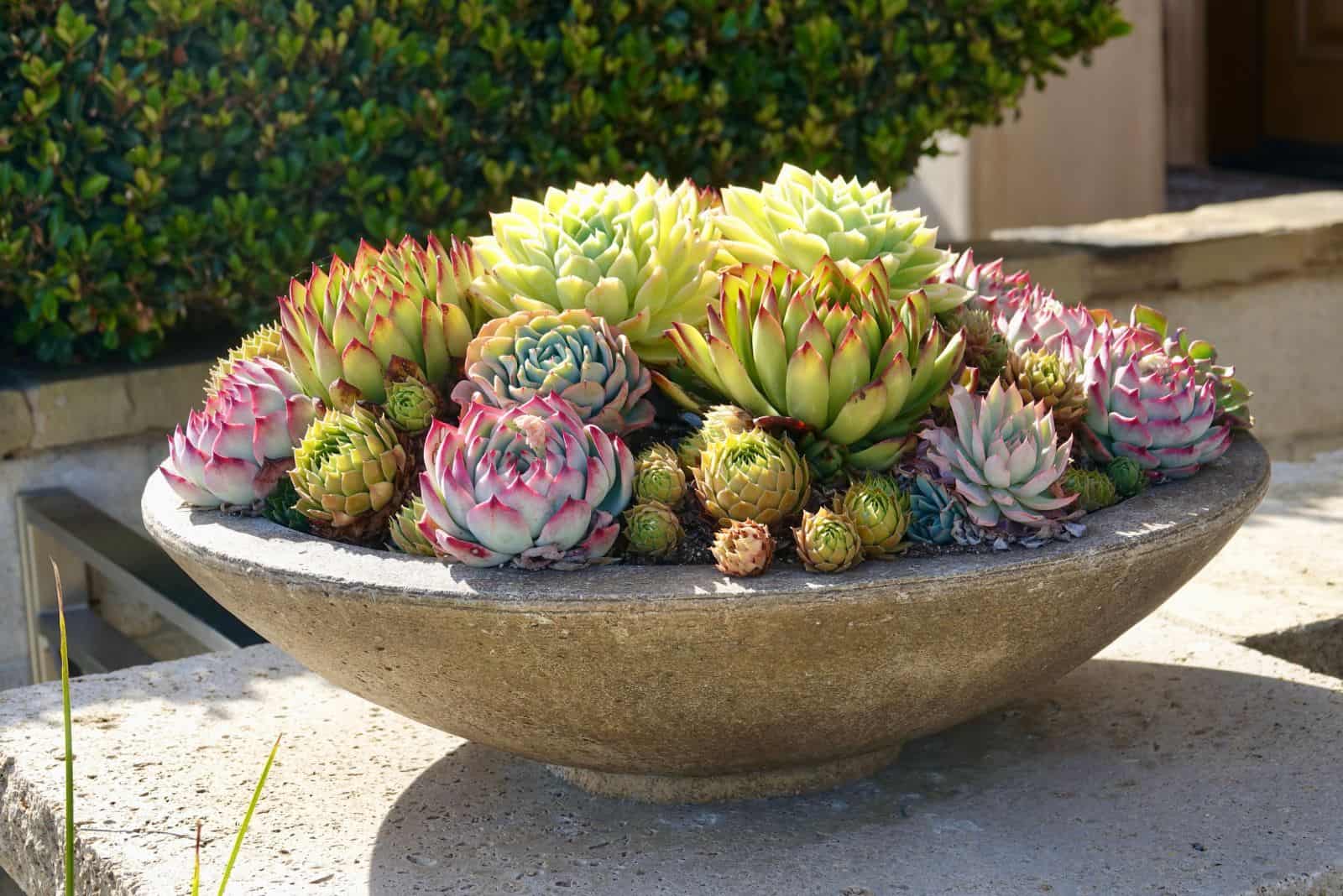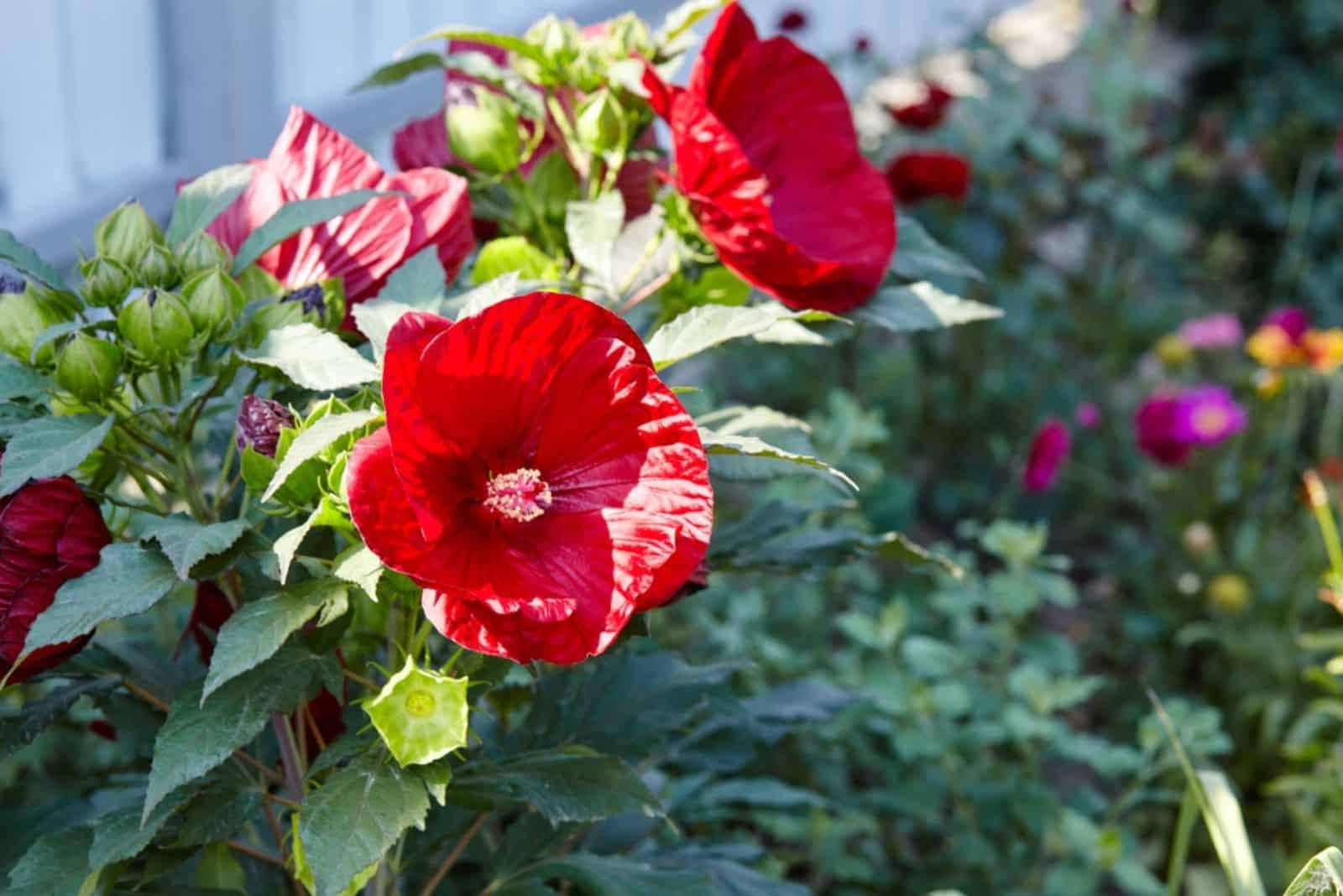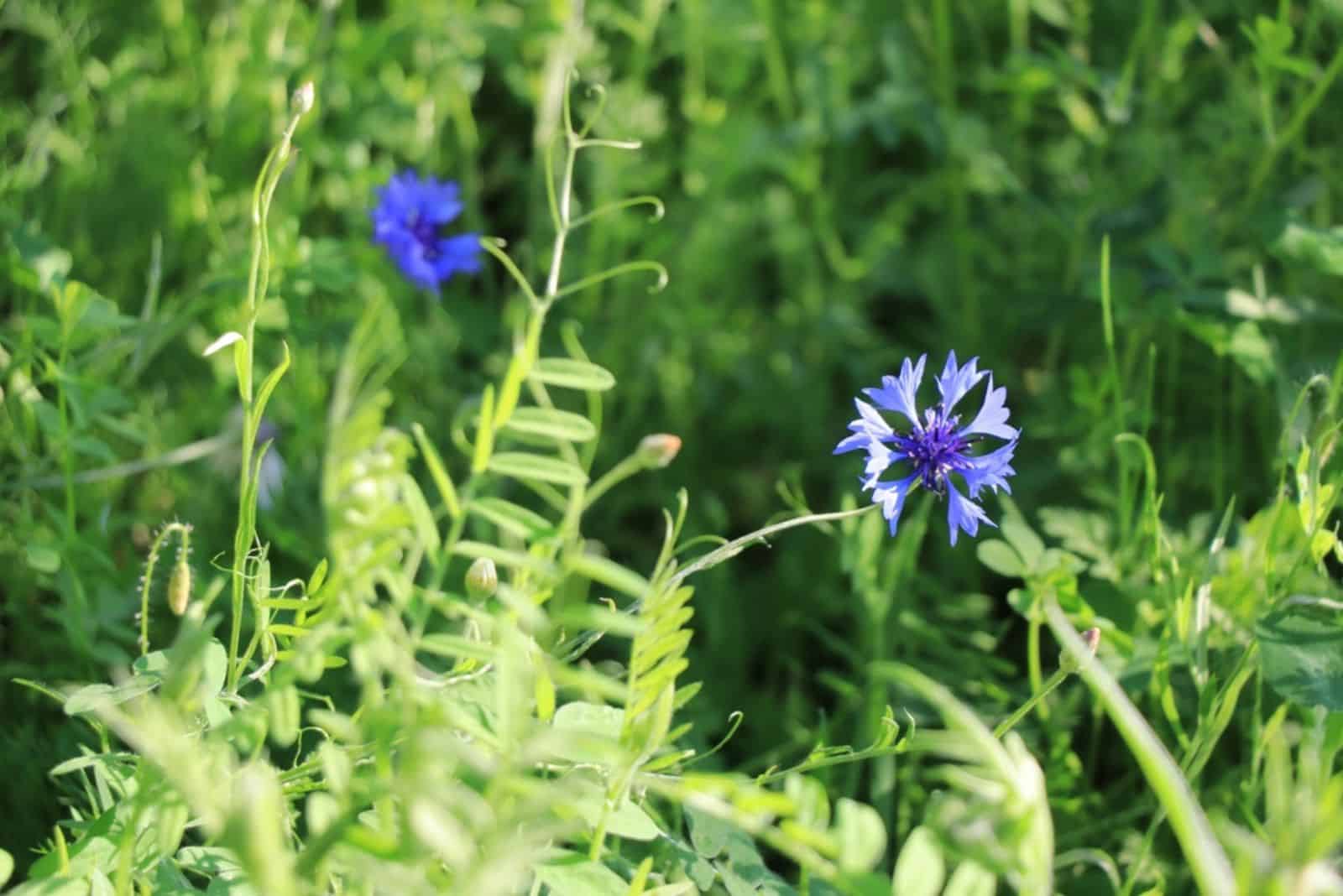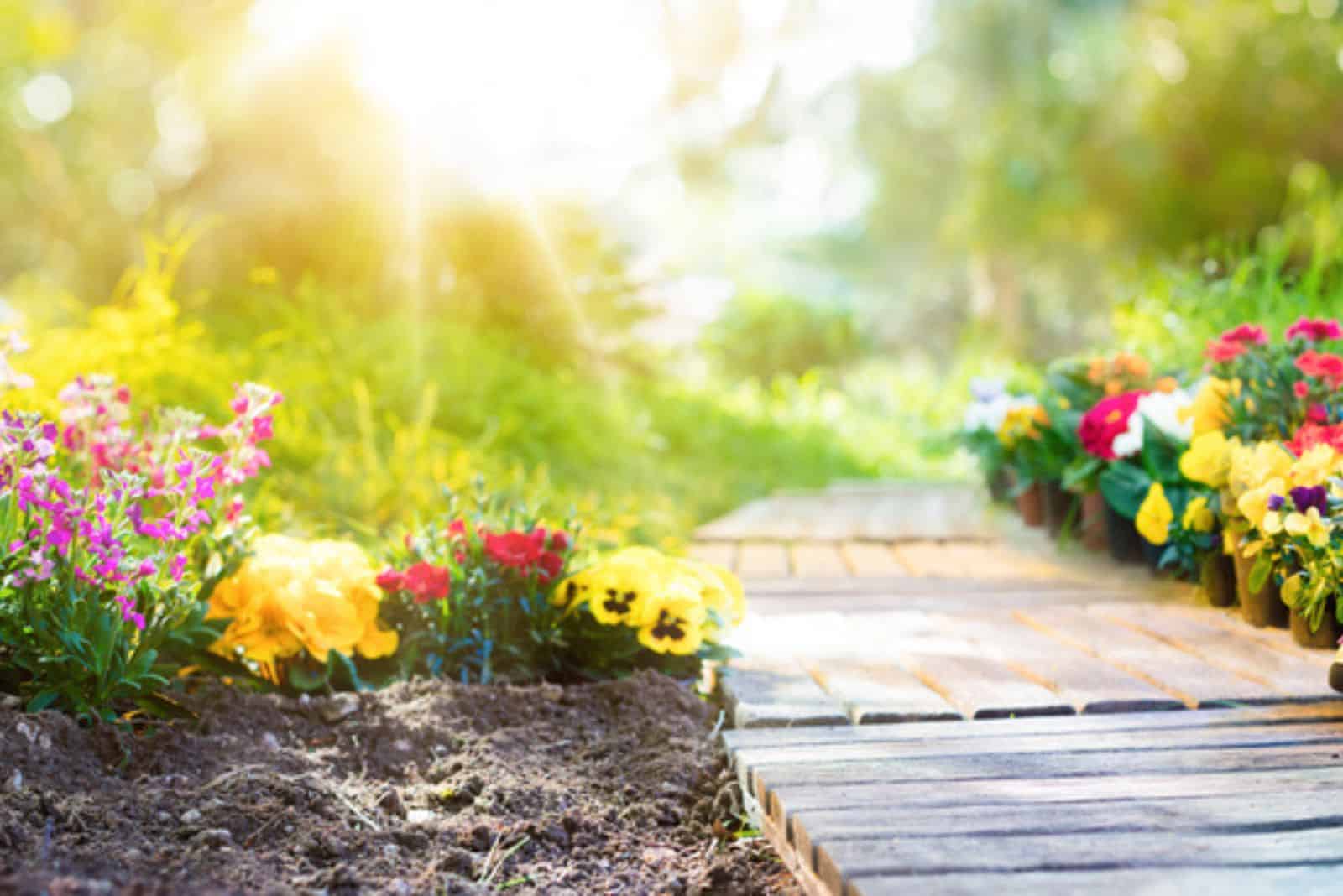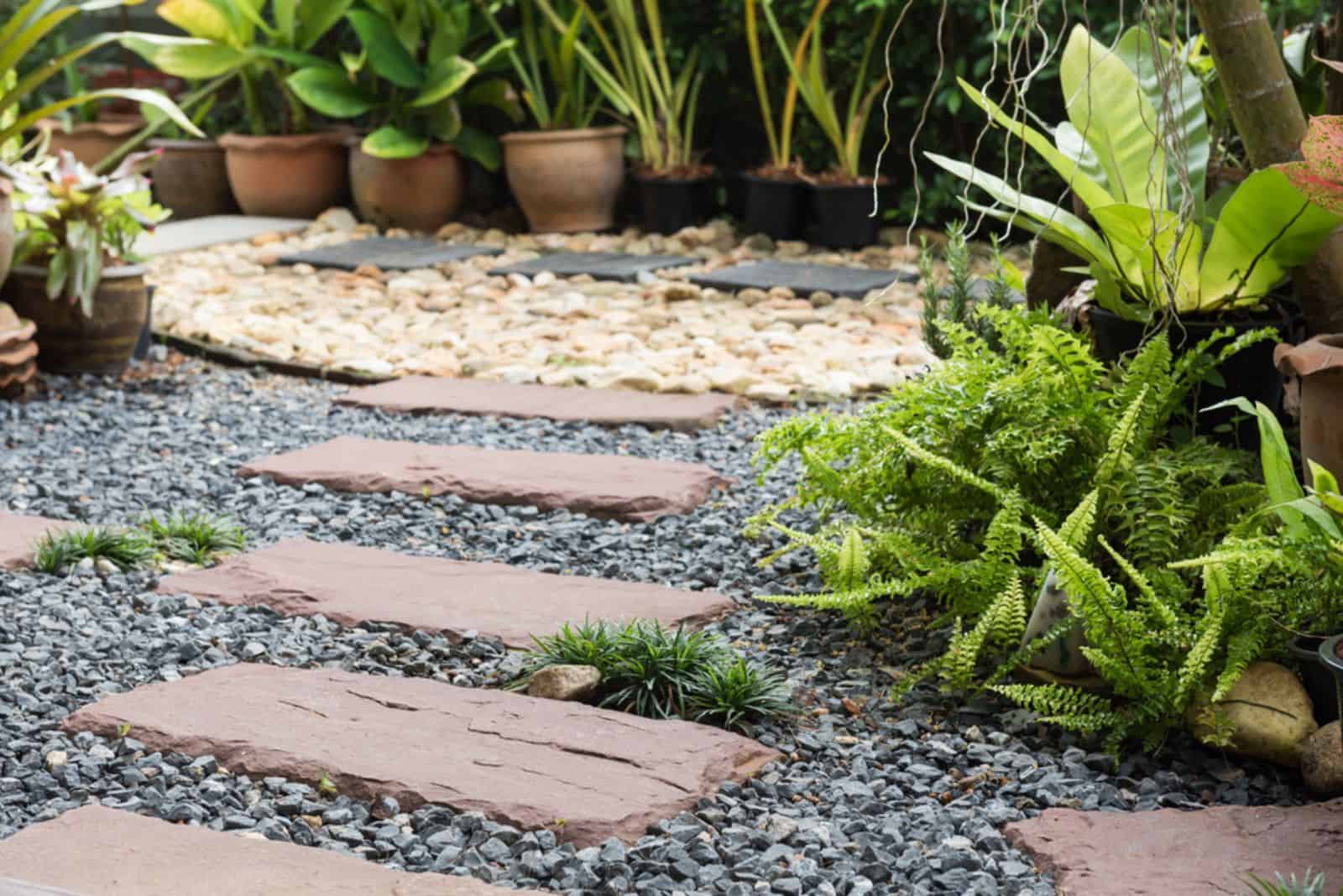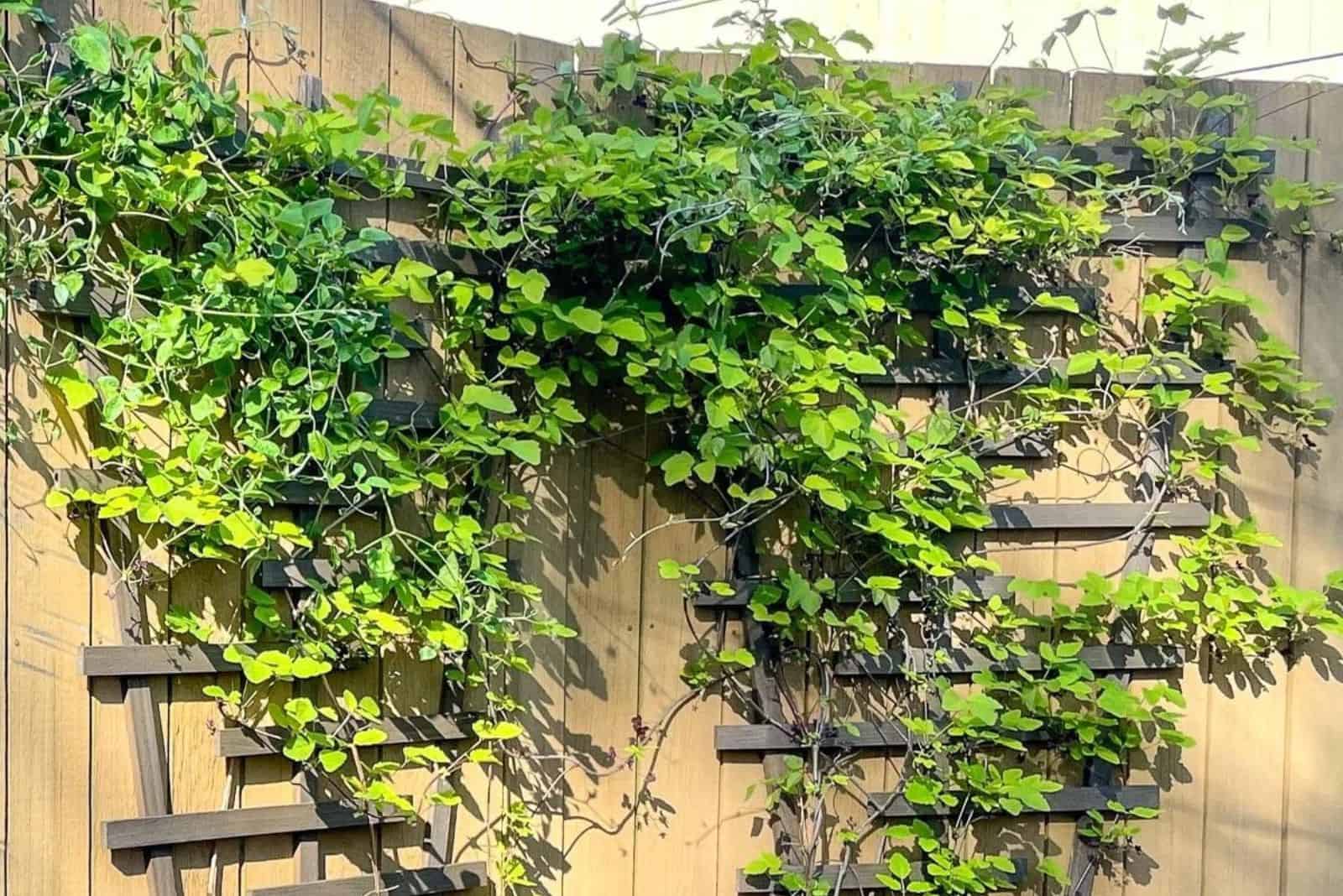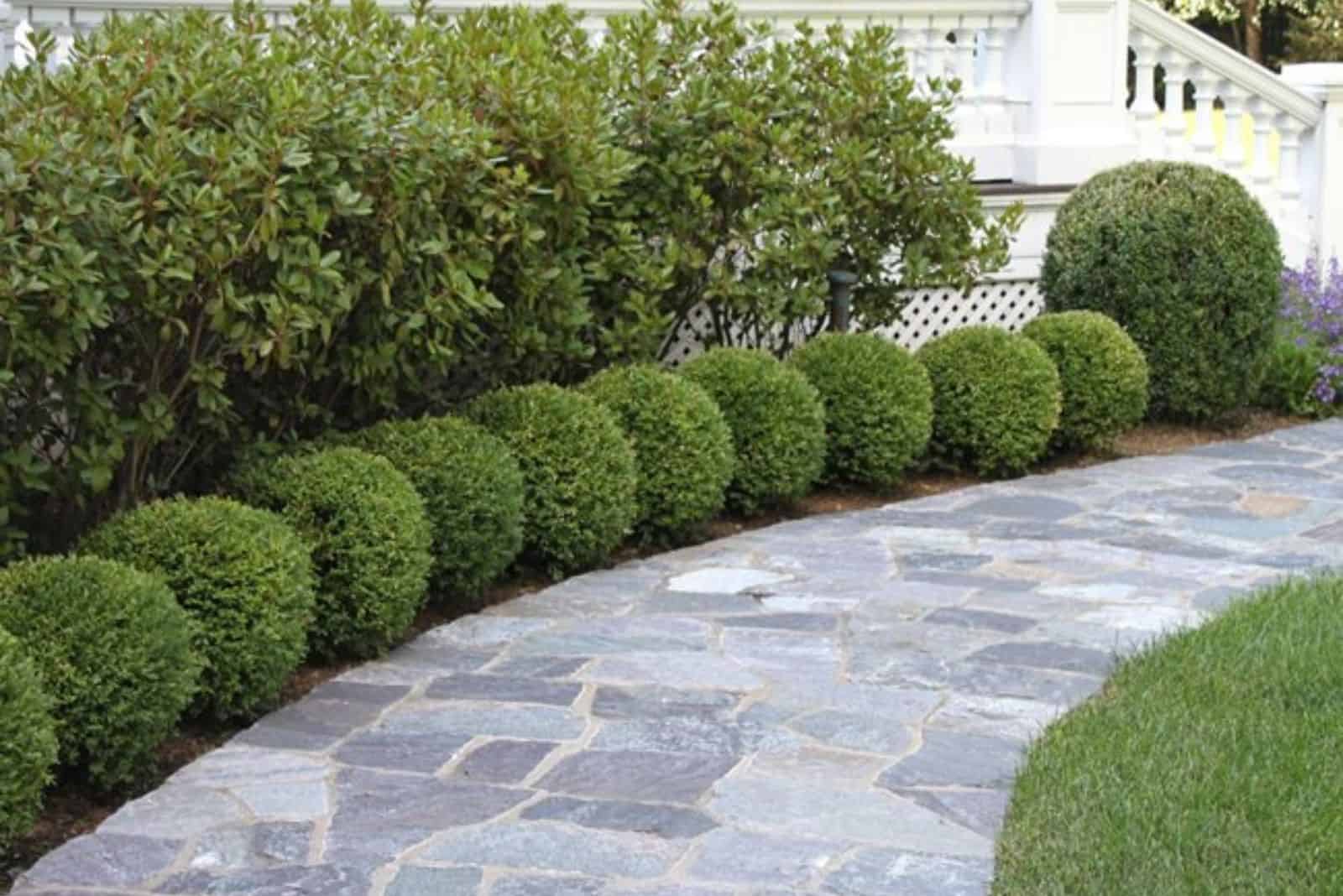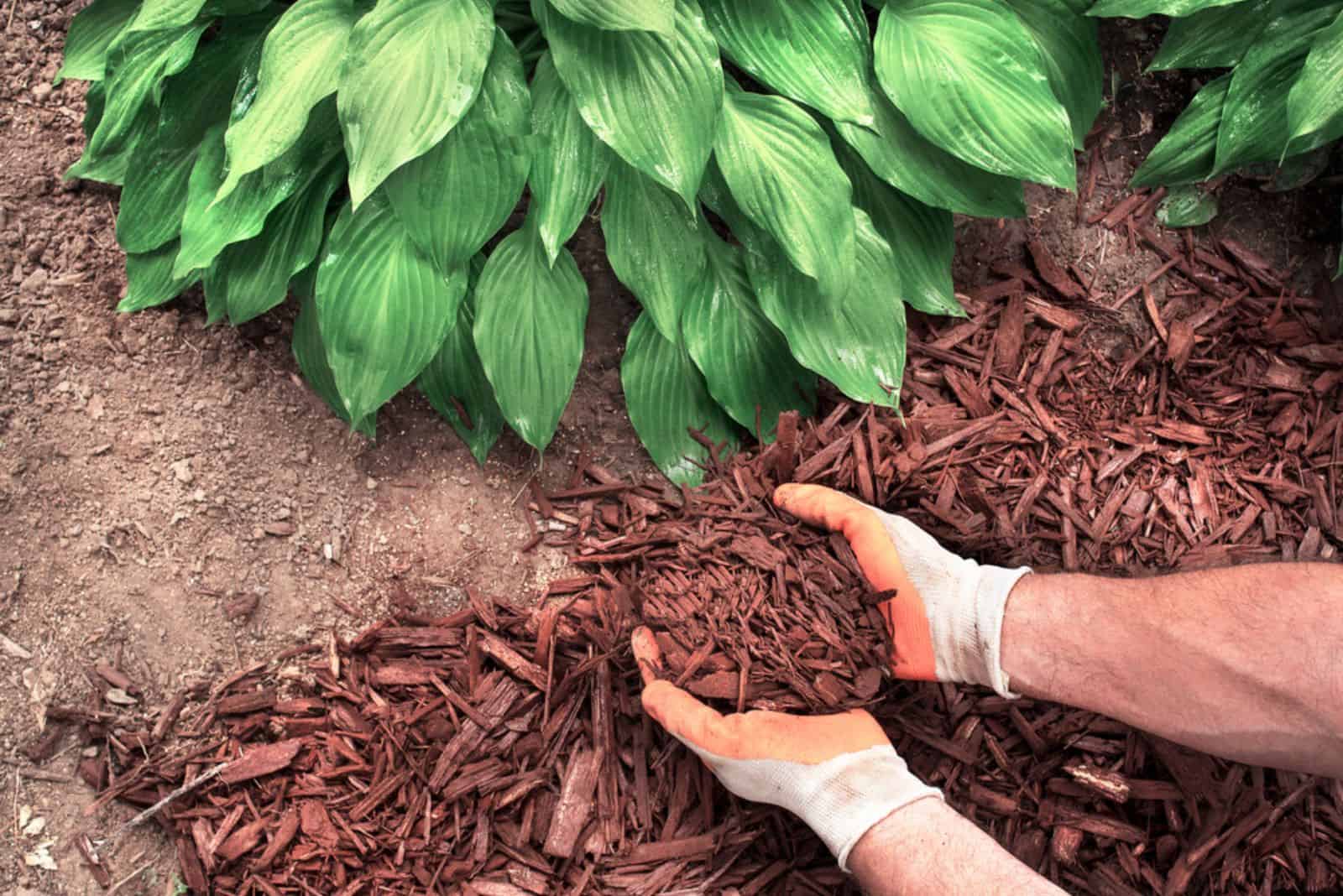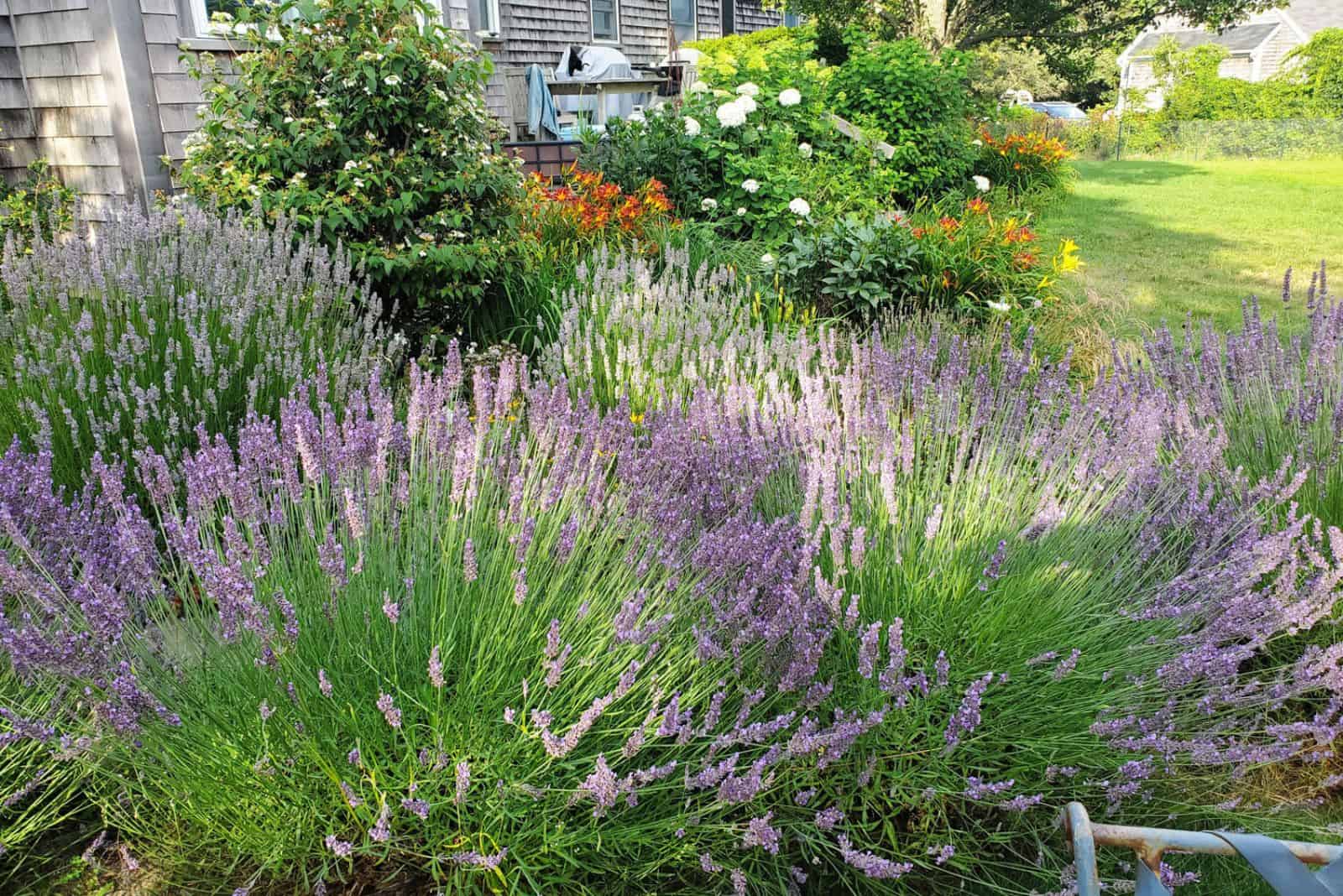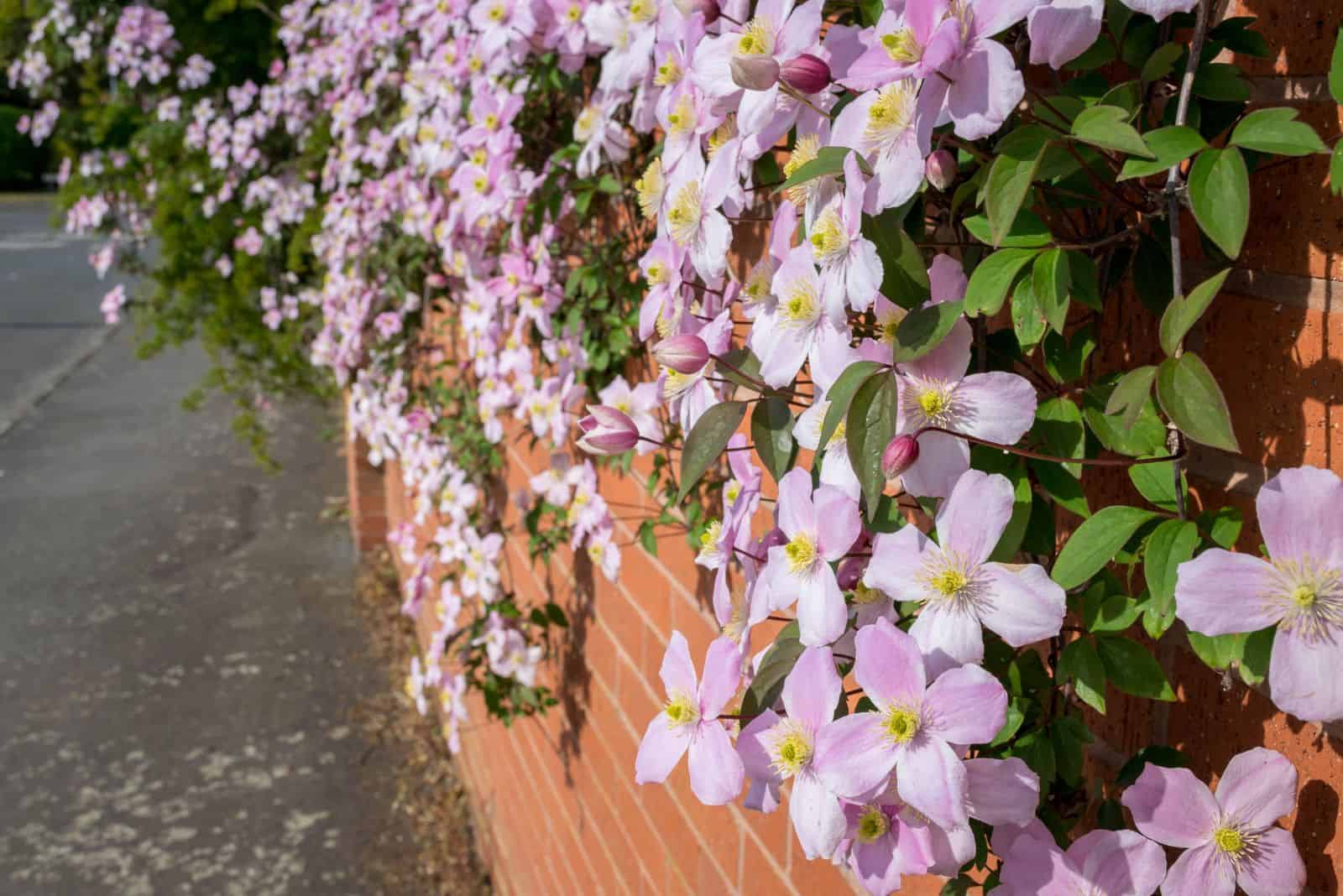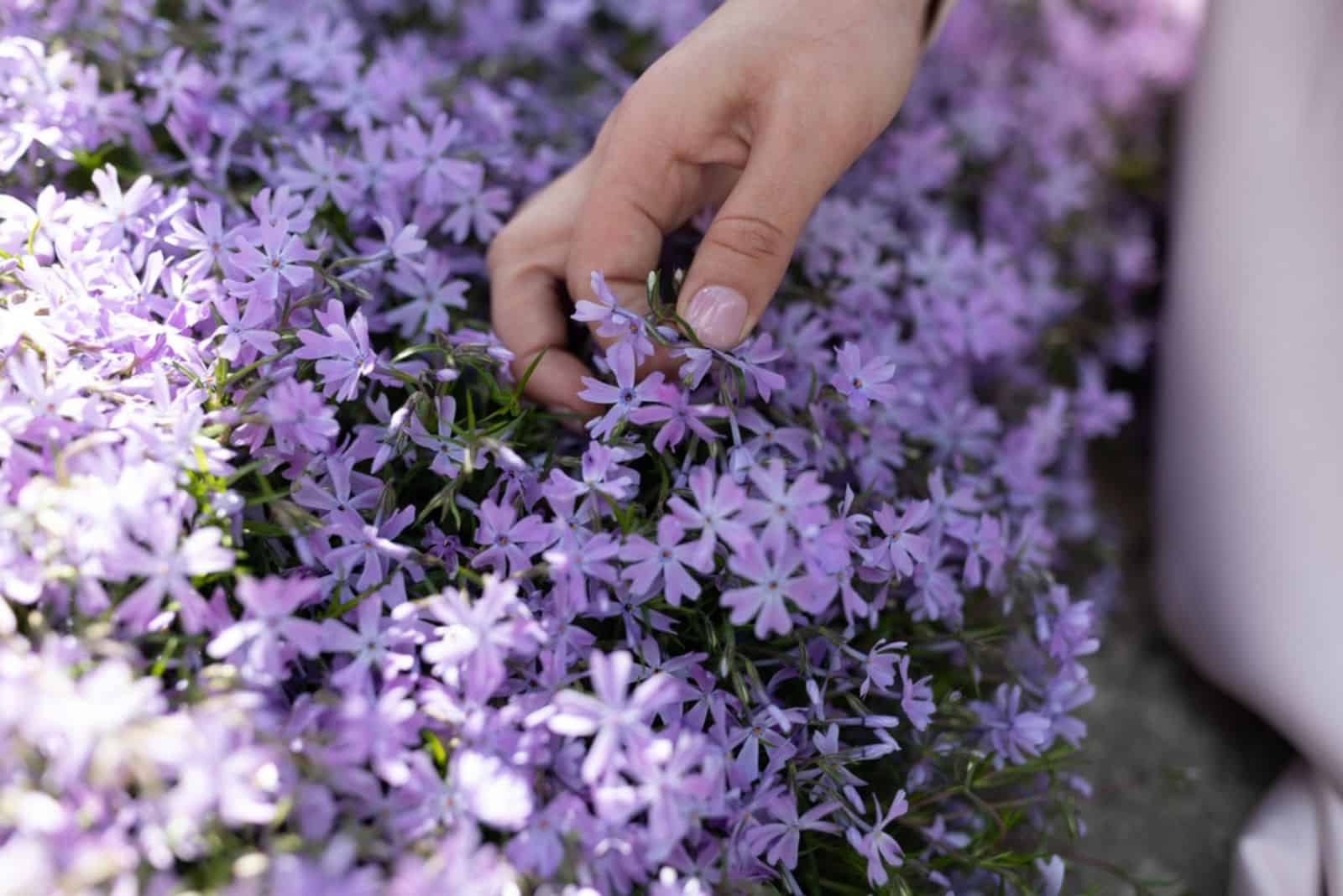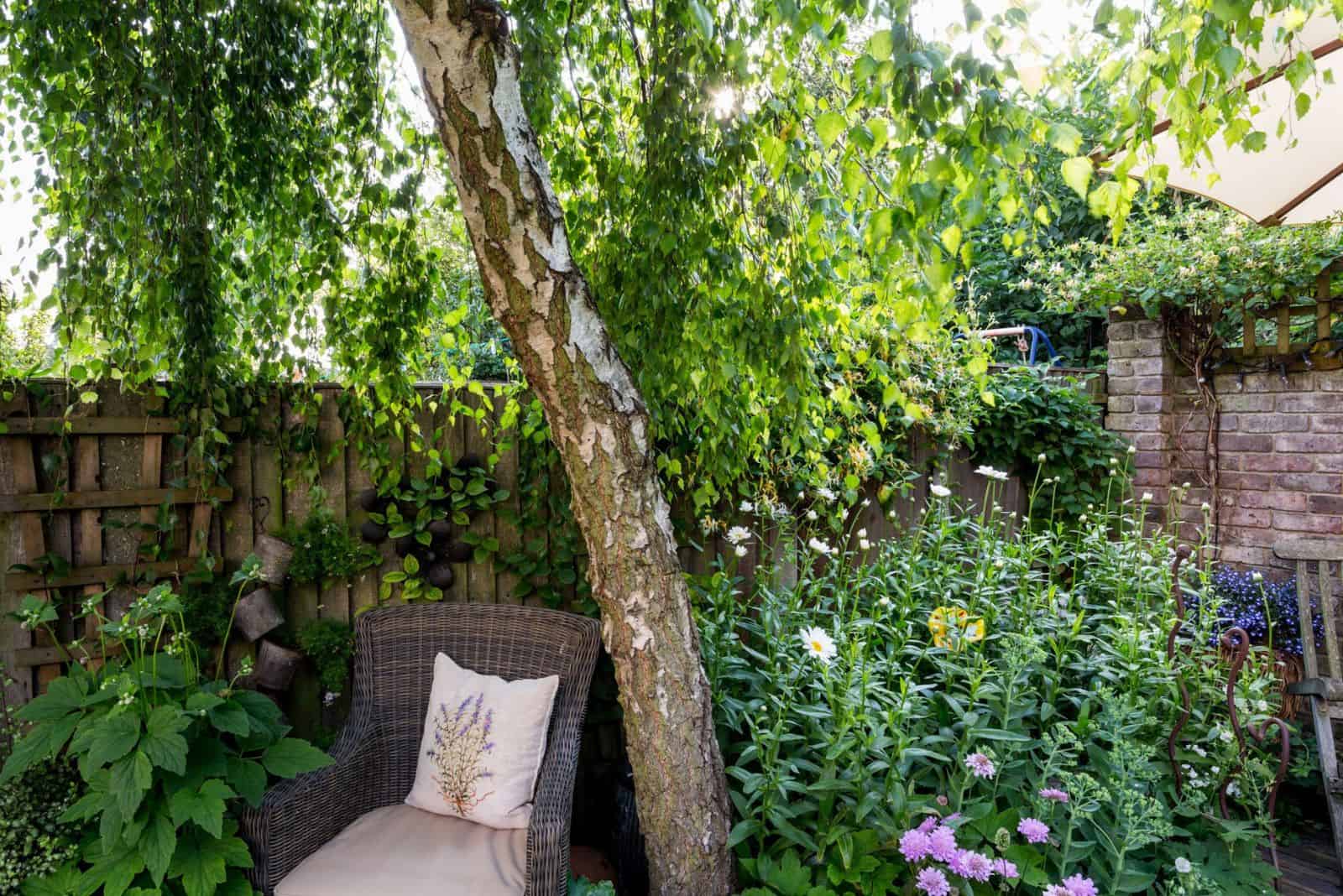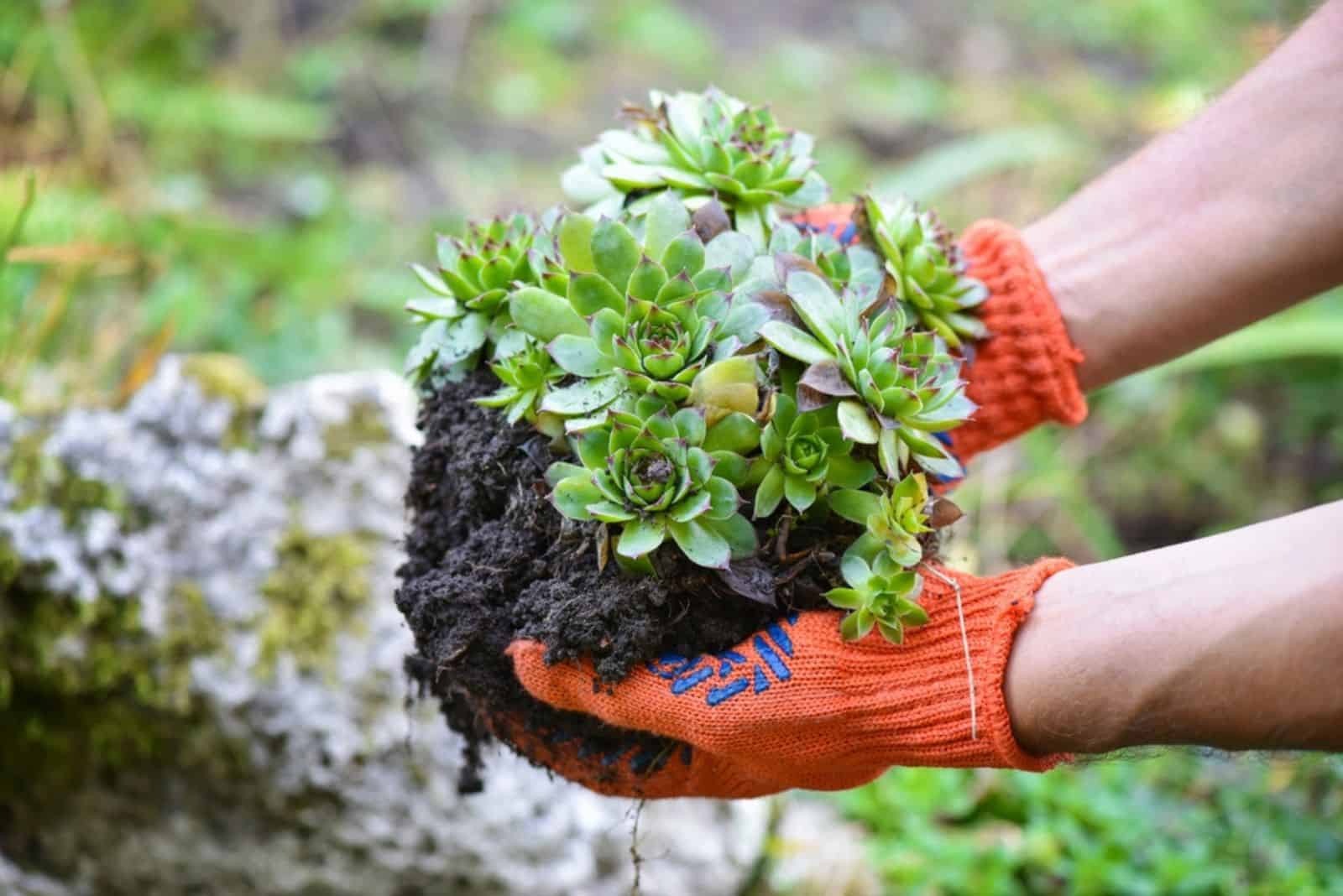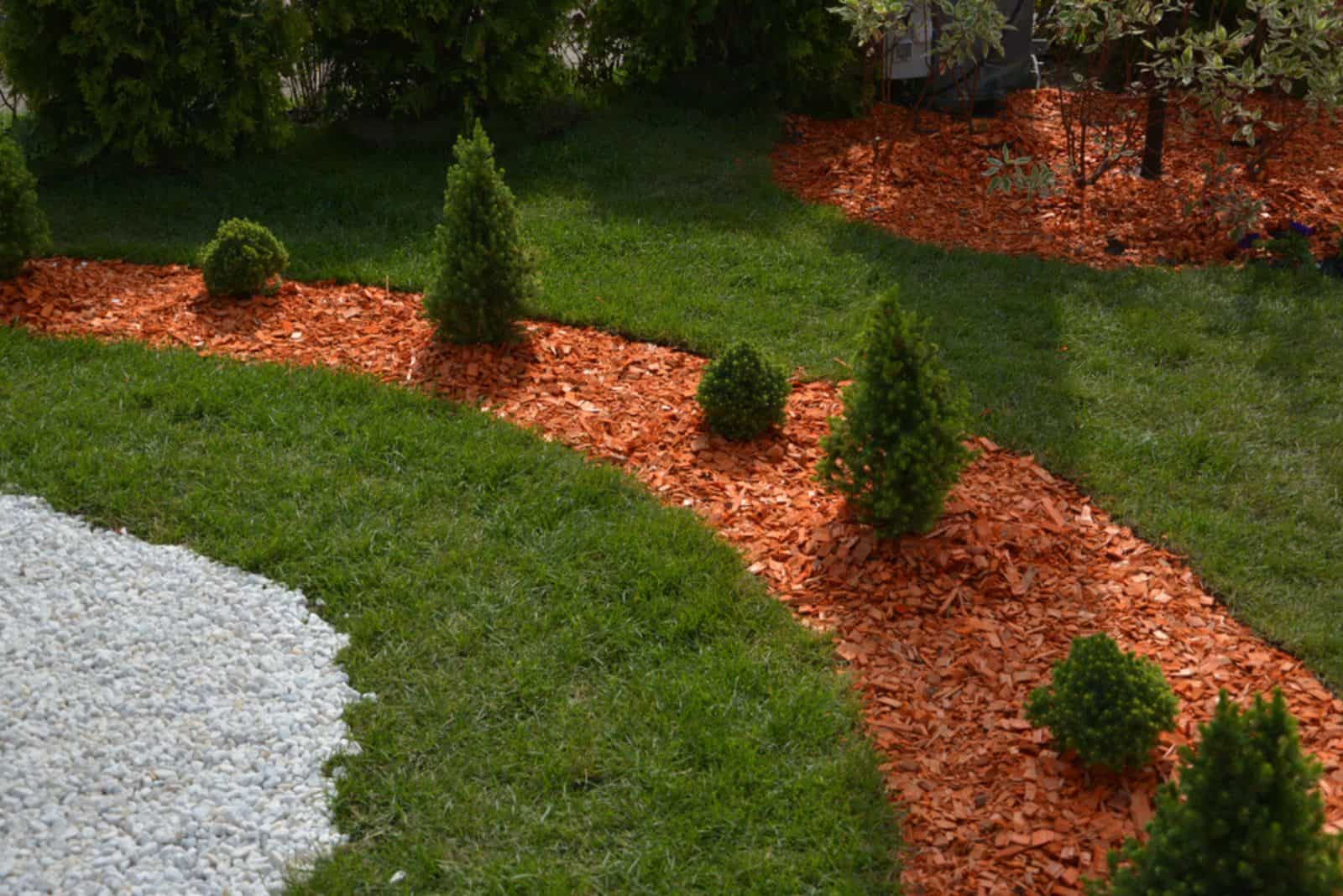Starting with an empty landscape can be discouraging, especially if you have zero idea of where to start.
The simplest solution is incorporating a couple of flower beds and a pathway.
Of course, sometimes we have no clue whether to go with a splash of color or stick to monochromatic themes, which plants to add, an overall theme, etc.
Here are some flower bed ideas you can use to transform your yard and inspire you to create something on your own.
Let’s dive in!
Laying Out Plants In Flower Beds
The first thing you need to do when creating flower beds is figure out where to place plants in it. Consider the mature size of each individual plant and follow the north-south planting rule.
That means placing taller plants on the north side and shorter ones on the south side of the garden to minimize shade. This way, your tall rose bushes won’t cast a shadow on shorter marigolds and shasta daisies, for example.
Here’s some interesting info on this concept:
https://www.youtube.com/watch?v=JcZh0tmGXfY
Making Them Look Good
Making your flower beds look good involves knowing what your ideal garden is before heading to the flower shop.
From there, it’s all about adding elements. If you want more privacy, plant a pittosporum or boxwood hedge, and if you want your hedge to be fragrant and colorful, rose bushes and lavender could be your first choice.
Understanding your needs will help you find alternatives and make your garden beds low-maintenance.
Another thing about improving the appearance of your garden is following plant spacing requirements. Sometimes they might look better when planted close together but they won’t flourish that way, leaving you with fungus-infected leaves instead of attractive flowers.
If you want your flower beds to be neatly packed, you can always get some smaller species and plant them close together to turn them into a ground cover, suppressing weeds in the process.
Creating Low-Maintenance Flower Beds
Low-maintenance garden beds is a relative term that means different things to different people.
If you’re a beginner and have never had a flower bed, low-maintenance could mean a couple of waterings per week. And for more experienced gardeners, low-maintenance could mean anything that doesn’t involve pruning.
Therefore, you’ll have to look for plants that fit your needs. If you hate pruning, stay away from roses and wisterias. If you’re not a fan of watering, go for drought-resistant plants.
Another thing that can help you out is keeping the flower beds small so they’re easier to maintain. You can always make them larger in the future once you get more experience.
Starting with short plants and small gardens, and slowly increasing their size, will yield much better short and long term results than planting a bunch of types you know nothing about!
Now that you know some basic things about flower beds, here are some ideas that can help you fill and lead them to glory!
1. Narrow Your Options
There are so many options to choose from! If this overwhelms you, just narrow them down.
Pick two to three shades and stick to them. This will bring just enough interest and balance to your garden to make it more appealing. If you’re having trouble with this, go with your favorite color and pick its direct opposite on the color wheel.
You can always go bold with your choices and tone them down a bit with a couple of white flowers, such as shasta daisies.
2. Go Monochromatic
Monochromatic gardens stick to one color. They’ll still shower you with unique tones, just in a more subtle way.
3. Experiment With Color Explosion
If you like vibrancy and gardens bursting with color, don’t be afraid to show it. Not every flower has to fit in the color scheme you pick.
You’ll care more ardently for species you love and pick because of what they mean to you than for those you choose solely for their color.
Create a cacophony of flowers, combining pink hydrangeas, yellow daffodils, blue hyacinths, and colorful peonies, for example.
4. Add Tall Plants
A truly breathtaking garden draws your attention to many places, not just one focal point.
Incorporate trees, shrubs, and hedges to create more interest, add more depth to your flower beds, and keep your guests engaged.
5. Create A Perennial Flower Bed
Save yourself a lot of hard work (and some money) by creating perennial flower beds. The plants you grow will come back the following year, so you won’t have to replant them every season.
Pick the longest-blooming perennials for an all-season bloom and enjoy your low-maintenance garden.
Note: If you want something to motivate you to work harder, plant a couple of biennials in your perennial garden.
6. Incorporate Some Annuals
Annuals can introduce incredible shades to your garden, so don’t discard them in favor of perennials.
Combine the two varieties and grow them together. Plant perennials in the back and annuals in the front of the bed to make removing them once they wilt easier.
You can also grow annuals in pots and hanging baskets, and use them for unique displays down a pathway or for a seating area, patio, etc.
7. Don’t Shun DIY Designs
Nothing makes a garden more unique and “yours” than scattering DIY designs in it. Old bicycles and wheelbarrows make excellent pots, for example.
Old mirrors are perfect fence liners that will reflect the beauty of your flower beds and make them appear larger.
Dead stumps and logs can be turned into a seating area, planter pedestals, or pots.
Use durable materials you have and look in yard sales, antique stores, and thrift shops to add more visual interest to your garden.
8. Add Raised Beds For Veggies
Flower beds are adorable, and you can accentuate their beauty by adding some raised beds for your veggies.
Tomatoes and zinnias look great together, so imagine what would happen with some other plants!
You can also go for leafy greens such as kale to add more interest and reduce your trips to the grocery store.
Discover how to fill raised beds, find the best wood planks you can, and build it with your partner to spend some quality time together.
9. Make A Container Garden
Container gardening is an excellent alternative to real-life flower beds. You can move them around so you don’t have to commit to planting your flowers in one place.
They’re ideal for those who don’t have any space to plant their colorful plants but still want to enjoy their allure.
Use large containers to give your space more structure and incorporate natural materials such as stone, terracotta, and ceramics for an organic look.
Of course, you don’t have to use classic containers. Dig around your garage, shed, local thrift shop, and yard sales for unique objects you can turn into pots. Drill a couple of drainage holes in the bottom and get to planting!
Flower plants and veggies are all suitable for container gardens as they’ll add allure and put food on your table.
10. Line Up The Garden
Clean edges and sharp lines will give your flower beds a finished look, and you can easily achieve this by incorporating some brilliant backyard pathway ideas.
Or you can create stone walls and wooden edging if you have little room to work with.
11. Make It Accessible
Even the most agile gardeners will have a hard time maintaining plants in the middle of a rich flower bed or all the way back along the fence line.
Not to mention the various needs of different plants.
That’s why making a plan before planting is crucial. Place needier plants in the front and along the edges for easier access, and keep the low-maintenance species in the middle.
You can also build simple pathways for easy passage, and raised beds if kneeling or sitting on the ground is too difficult for you.
12. Work With The Sun Exposure Your Garden Gets
One of the things that dictates which plants you can grow in your flower beds is sun exposure.
If you have more shadow in certain areas, incorporate gorgeous shade-loving perennials such as hostas, caladiums, hydrangeas, and windflowers.
And if you live in a sunny location, cactuses and succulents could be your go to plants, provided they have suitable drainage.
13. Use Suitable Plants For Your Growing Zone
Knowing your USDA hardiness zone will save you a lot of trouble when it comes to purchasing and planting flowers.
Do this research before looking for plants so that you don’t obsess about something that can’t be grown in your area.
Also, not all plants within the same genus will be hardy in the same areas. For instance, tropical hibiscus thrives in zones 10-12, while hardy hibiscus grows in zones 4-9, depending on the variety.
14. Incorporate Natives And Wildflowers
Native and wildflower plants adapted to your region will grow best, so why not use them and create a low-maintenance flower bed?
They are already used to all the growing conditions so you won’t have to do much watering and soil amending.
You can ask your local florist or someone at the nursery to help you out if you’re just beginning. Ask for recommendations on which plants to grow and when to sow or transplant them.
Finally, natives and wildflowers will attract many pollinators, ensuring your veggies set plenty of fruit when the time comes. Native bees love native wildflowers, so support them by adding a couple of these plants to your backyard.
15. Play With Shapes
I’ve noticed that many landscapes mirror the shape of houses in terms of rectangular lines, but you can go beyond that.
Add winding pathways for a more relaxed feel, rounded flower beds down long walkways to break its seriousness, and semi-circular beds along fences or the house.
16. Think Of Hardscaping
Hardscaping is an excellent way to make your live flower beds pop. It uses inorganic materials such as stone and wood, and there’s so much you can do with it.
Create a rock garden, patio, gravel pathways with pavers or simple stepping stones, and add a fire pit to make everything pop.
You can even give it a purpose other than aesthetics. For instance, using large rain barrels or chains to collect rainwater is a sustainable and interesting way to transform your landscape.
17. Consider Your Privacy
There are many affordable ways to block a neighbor’s view, such as incorporating tall plants, building fences and pergolas, adding privacy and lattice screens, etc.
But tall plants are definitely a more relaxed way to give you more privacy or divide certain areas, such as separating a garden from an outdoor dining room.
You can use ornamental grasses, vines, shrubs, trees, and hedges. Use ones that are easy for you to maintain and add color to your surroundings.
And if you want to have something to eat for breakfast, planting grains such as amaranth could be something to consider. It has lovely blossoms that slightly resemble astilbe.
18. Add A Centerpiece
Planting shrubs, trees, and vines all over your garden has a certain appeal to it, but adding a focal point will make all the different areas come together in one whole.
It could be a particularly large tree your family nurtured over the years, a pond filled with aquatic plants, a fountain, or something straight out of your DIY sack.
Turn old tree stumps into flower planters or even a hot tub if it’s large enough. What I want to say is don’t let your surroundings limit you; the bolder you go, the more interest you’ll add to your landscape!
19. Mulch
Mulching has many benefits for your garden in addition to making it more attractive.
It will lower the needs for watering because it reduces moisture evaporation and increases its retention.
Mulching also suppresses weed growth, so you won’t have to bother with this.
And the best part is that you don’t need that much. An inch or two of mulch is more than enough to keep your plants comfortable. In fact, a thick mulch layer – especially around tree trunks – can lead to rotting.
20. Engage The Senses Through Scents And Textures
The first thing we notice about flower beds is their looks. But once we get over that first impression, we look for other sensory details such as smell and texture.
There are many fragrant garden ideas you can try out to make your yard more welcoming, such as planting roses, adding aromatic herbs, etc.
I am a great proponent of adding herbs to your flower beds as they’re difficult to kill and perfect for beginners. Lavender, rosemary, thyme, and sage are perfect for rock gardens and drier climates because they’re fairly drought-tolerant.
And if you have a more fertile and moist soil, try planting some mint; just be sure to monitor it closely as it spreads like crazy.
Combine them with other plants such as lamb’s ear, and you’ll get a textured garden in no time.
21. Vine It Up
If you don’t have much space in your garden, think vertically. There are many vining plants such as clematis, honeysuckle, jasmine, and trumpet vine that look adorable when wrapped around lamp posts and pillars.
Train them on wall trellises or garden arches for a more dimensional landscape.
22. Use Ground Covers
I love exploring new ground cover ideas to keep my beds colorful, interesting, and free from weeds.
Planting creeping phlox between large boulders will turn your garden into a purple sea with jagged rocks protruding from the bottom.
You can also use ground covers as alternatives to turf grasses to create a low-maintenance lawn that provides much more interest than a traditional one.
23. Add Things You’ll Enjoy
It may sound cheesy, but you have to listen to your heart when starting your garden. If you couldn’t care less about DIY elements, don’t add them.
And if you just want that curb appeal everyone’s talking about, forget about vegetable plots.
Plant more trees if you want a cool corner where you can relax, and add a seating area or chaises underneath.
24. Plant Some Succulents
If your region is warm all year long and doesn’t get much rainfall, plant a succulent or two to uplift the decor.
You can let these drought-tolerant plants take over your entire yard and show off their beauty to the world instead of sheltering them indoors like I have to.
25. Incorporate Evergreens
If you live in a cooler climate with more rain, don’t skimp on evergreens. They’ll add visual interest to your flower beds and are incredibly easy to care for.
Use them to create shrubs, topiaries, or even a pine alley.
I hope these ideas will get your juices flowing and help you transform your landscape.
Until next time!

